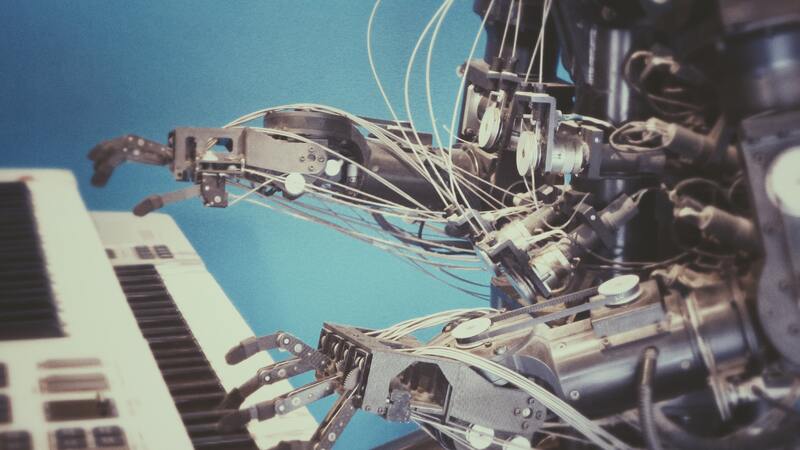Introduction
Robotic Process Automation (RPA) and Business Process Automation (BPA) are both automation approaches to enhance business operations, but they have distinct focuses and applications. It is always good to distinguish Robotic Process Automation (RPA) from Business Process Automation (BPA). These initiatives centered around processes exhibit distinct characteristics, yet they complement each other significantly in strategizing, automating, and enhancing essential business operations.
RPA and BPA are complementary partners in driving digital transformation initiatives. RPA has received much more publicity recently, but BPA is an essential discipline and a key enabler in scaling RPA projects.
RPA and BPA showcase multiple differences, with the most notable distinction being that RPA focuses on automating a defined set of tasks. At the same time, BPA involves identifying the tasks for automation and orchestrating the steps required to streamline and unify those tasks.
Understanding Robotic Process Automation (RPA)?
As the name suggests, RPA involves using software robots (bots) to automate repetitive, rule-based tasks. RPA aims to mimic human interactions with digital systems, enabling the automation of tasks that involve navigating through software applications, inputting data, performing calculations, and more. RPA excels in tasks with well-defined processes and structured data.
Initial RPA implementations displayed a degree of fragility and lack of adaptability, leading to constraints on bot deployment across numerous enterprises. Consequently, Gartner introduced the term Hyperautomation, describing a suite of technologies designed to enable large-scale bot automation. Hyperautomation amalgamates diverse technologies to establish heightened automation within applications such as process mining, machine learning, and low-code/no-code development environments.
Understanding Business Process Automation (BPA)?
Business Process Automation (BPA) serves as a business practice that aids organizations in gaining deeper insights into their operations, aiming to refine workflows, enhance productivity, minimize inefficiencies, reduce expenditures, and enhance adaptability, expandability, and the effectiveness of processes. It expands upon the foundational principles of scientific management introduced by Frederick Winslow Taylor, incorporating contemporary strategies for elevating quality and efficiency, advanced by figures like Peter Drucker, as well as methodologies such as total quality management and Six Sigma for enhancing operational processes.
Historically, Business Process Automation (BPA) necessitated the expertise of process professionals who meticulously constructed process diagrams through hands-on observation and engaging in discussions with business users. These diagrams were commonly documented using visual diagramming tools like Microsoft Visio, employing a business process modeling notation. These resultant files remained static and demanded supplementary efforts for implementation. However, this approach is transforming, thanks to enhanced tools that automatically capture processes, illuminate prospects for enhancement, and facilitate the execution of novel workflows.
BPA encompasses both a cultural and a technical dimension. Enhancing processes requires employees to embrace change willingly, letting go of redundant tasks while incorporating new ones.
RPA and BPA: Leveraging Each Concept Individually and in Conjunction:
- Operational vs. Strategic Implementations – Many RPA projects commence with a BPA approach to comprehensively understand business processes. RPA is often rolled out as a short-term solution to address specific issues until a more suitable platform is adopted or the benefits of a long-term technology strategy materialize. Process mapping can be focused and precise, avoiding extensive mapping, such as an entire accounting process, when the objective is to automate invoice processing. A comprehensive business process map serves as a valuable tool to identify and rank RPA prospects.
- Automation versus Monitoring and Analysis – RPA and BPA synergize harmoniously in deploying and overseeing automated procedures. RPA pertains to the automation element within BPA, encompassing activities like data formatting and the seamless exchange of information across diverse systems. On the other hand, BPA encompasses the design of workflows, vigilant monitoring, and insightful analytics for RPA operations and processes.
For instance, consider marketers who require a monthly report outlining how their campaigns impact sales figures. BPA software will assign roles and issue notifications to individuals responsible for initiating the project. Subsequently, an RPA tool will be triggered to transfer sales data from a CRM or ERP system to a report generation tool. With each incremental step achieved, BPA software will automatically dispatch status updates to project participants for approval while also introducing an analytical layer to track the time taken for each step's completion and to identify tasks necessitating refinements.Top of Form
- Faster vs. better processes – RPA makes any process faster, including a bad one, while BPA can improve an existing process. Deploying robots to automate tasks in an inefficient process just makes a faster inefficient process. Approaching business process automation by looking at the whole process end-to-end through BPA implementation results in a better process where RPA can have a vital role to play.
Despite the recent popularity of RPA, BPA is still the foundation of automated business processes. BPA manages end-to-end processes, structures, and business data and coordinates how people and systems work together. By visualizing the process data, BPA provides strategic insights for process improvements and innovations.
RPA can connect BPA processes with the same technologies deployed with other platforms and systems. BPA processes can delegate tasks to RPA robots at the right time and in the proper context.
- Implementation versus Comprehension – RPA excels in executing process automation, while BPA enhances comprehension of these processes by delineating, centralizing, and overseeing process workflows. BPA is focused on gaining insights into how operational tasks unfold within your organization and how these tasks align with overarching business objectives.
Understanding the sequence of procedural steps, their associated costs, frequency of execution, error occurrences, and variations can contribute to the optimization of workflow efficiency. In specific scenarios, process refinement and retraining could be essential, whereas instances involving rule-based, repetitive processes vulnerable to labor-intensive mistakes could warrant the deployment of RPA.
- Technological Inefficiencies versus Bureaucratic Inefficiencies – RPA and BPA contribute to streamlining business functions and eradicating distinct forms of inefficiency. RPA effectively targets inefficiencies within technology systems by utilizing bots to expedite and enhance software-driven tasks. At the same time, BPA addresses inefficiencies within an organization's bureaucratic structures and the human hierarchies that govern its operations.
BPA signifies a mindset or a series of methodologies rather than a specific tool, program, or application. Implementing BPA signifies a transformative shift in the fabric of business architecture, a transformation that may take time to manifest fully. BPA tools serve as aids in keeping stakeholders abreast of their business processes during this transitional phase.
BPA necessitates the involvement of entire teams or departments to collectively organize and collaborate on overarching business processes within a company. Meanwhile, RPA may rest within the domain of a specialized development team or be integrated on an as-needed basis, addressing tasks and processes identified by BPA as prime candidates for RPA integration.
- Task versus Architecture orientation – RPA automates specific repetitive tasks, while BPA encompasses an organization's end-to-end architecture and process management. Although RPA will most likely be an integral part of BPA, RPA is not necessarily the only area of emphasis within BPA for organizations.
BPA plays a role in the strategy, planning, technology, and execution of business processes. RPA typically enters during the last two phases, technology, and execution.While RPA involves straightforward determinations for automating particular repetitive tasks, BPA can incorporate machine learning and predictive analytics to empower processes that demand more intricate decision-making.





